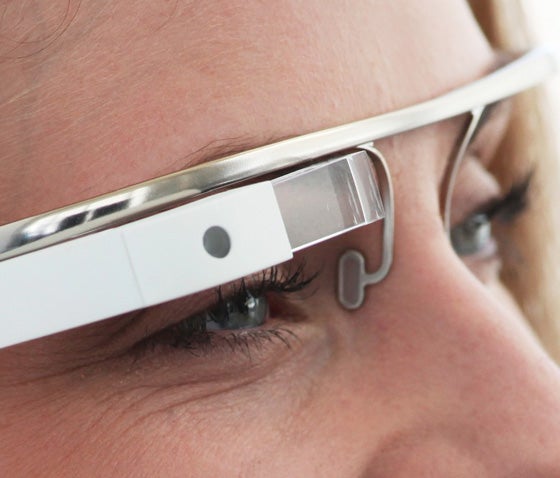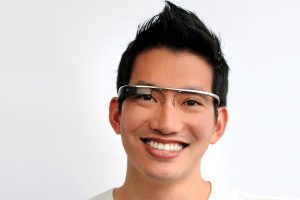Looking Through Google Project Glass

“I need your clothes, your boots and your motorcycle.”
the Terminator
There is fundamental interest in being able to see more than the naked eye can perceive. The analytics of the Terminator, witnessing the magnetic spectrum like Geordi La Forge, Cyclops’s ability to fire laser beams – enhancing vision takes us straight to science fiction and a world of almost infinite possibility. A world that Google this week let us dream may not be that far away…
”’Project Glass”’
Had it come from any smaller company, ‘Project Glass‘ would be dismissed as a pipe dream, the ambitious vision of a design student trying to attract the attention of a high profile employer. However, it comes from Google’s labs, and the company is deadly serious. “We think technology should work for you—to be there when you need it and get out of your way when you don’t,” it proclaimed. “A group of us from Google [x] started Project Glass to build this kind of technology, one that helps you explore and share your world, putting you back in the moment.”
A promotional video (above) accompanied the announcement demonstrating how core smartphone functionality (mapping, social media, video calls, etc) could be integrated into a pair of lightweight glasses using virtual reality. Google showed off a concept design and then, as if to demonstrate the strength of its conviction, a few days later company co-founder Sergey Brin casually turned up to a public charity event wearing a pair (below). A timescale appeared (late 2013) and even a price range was mooted (£300-£500). 
”’What Nonsense”’
There is a logical reaction to all of this: “what nonsense!” The Project Glass video has already been subject to numerous parodies and it raises more questions, both in terms of hardware and software, than it answers. Looking at the hardware you have to question battery life in an age where we can barely get a smartphone to see out a day. In addition there are questions of durability, heat, fit (especially for those who already wear glasses), processing power, always-on internet connectivity and much more. Just wait for the campaigns to begin about them cooking your brain. 
The questions asked of software are even greater. Invasive (perhaps even hypnotic) advertising, new levels of privacy invasion (both you and others you ‘see’), increased risk of theft (they don’t even have to be taken from a pocket) and further distraction from the physical world (observation when walking, riding and driving is already poor) are all huge, potentially deal-breaking obstacles. A raft of new legislation regarding their use would also have to be drafted worldwide.
So why do we hold onto the dream so tightly?

